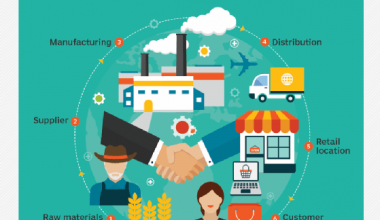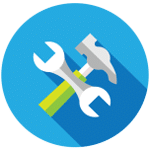In today’s fiercely competitive and fast-paced small business environment, new product development is essential if you want to stay in business. New product development includes product development processes, examples, stages, ideas, and the strategy employed. Small businesses and startups must continuously employ a new product development strategy and ideas, as well as improve their products if they’re going to compete with big companies and keep up with consumer trends. The “new product development process” describes the stages leading up to a new product’s release on the market. It takes several steps to create a product for online or offline sale, from the initial concept to the final product launch and marketing to its target audience. New product development is a must if you want to survive.
What Is New Product Development?
The process of turning a product concept into a marketable product is called new product development. New product development is the first stage in the life cycle of a product. Everything from product positioning to pricing strategy to distribution channels or after-purchase services is included in this process, which starts with the conception of an idea. The stages are ideation, research, planning, prototyping, sourcing, costing, and commercialization.
Things to Consider Before Starting a New Product Development
- Is there a demand for the products?
- Can it be manufactured?
- How can the products reach their target audience?
- What kind of opposition will it face?
- Are the required financial resources available?
- Which problems are most likely to arise?
New Product Development Stages
Specific procedures must be followed when introducing a new product to the market. Although it can be lengthy, it is done to make your product the best before it is marketed.
Let us discuss the different stages involved in new product development.
#1. Idea Generation
This stage is where many business owners are stuck. Creating a new product begins with the generation of fresh concepts that can creatively address consumer issues. Knowing who your target market is and what issues you are trying to address is essential. Feel free to test your idea out on other people. In summary, new product development ideas is a very crucial stage.
#2. Market Research
Following the development of product ideas, the next step is to conduct market research to determine whether there is a current need for your product and a market for it. This stage also helps you identify any additional services or products you can offer that your rivals don’t.
You can also get feedback from a large, unbiased audience by asking them what they think of your new product ideas. Surveys are one of the most effective ways to get customer feedback. You can conduct the majority of market research online. Online market statistics are available from Statista and Google Trends and can be used to investigate market demand.
Therefore, this step is critical to complete before moving on to the next because it may help you better define your initial concept and research goals.
#3. Business Planning
The third step in new product development is business planning. Here, you start thinking of ways to bring the product to life. In this stage, you begin sourcing raw materials used in actual production or for business partners that will assist you in the manufacturing process.
One of the best places to begin is to provide a well-detailed hand-drawn sketch of what your product should look like. This stage entails creating a viable marketing plan and pricing structures that are reasonable for your goods and acceptable to customers.
#4. Prototyping
Making a sample product that is a mockup of your finished product is known as prototyping. At this point, your product is beginning to take shape. When prototyping, you typically test out several iterations of your product, gradually eliminating and improving until you are satisfied with the final product. Give others a chance to evaluate your sample and provide you with unbiased feedback. Create the most appealing model you can. It lays the groundwork for the subsequent steps and is the first tangible result of a lengthy process.
#5. Test Marketing
You must test the final product before releasing it to ensure it satisfies the target market’s needs. In this stage, you share your prototype with the target audience and ask for feedback on how the product works. The result of your testing might require you to go back and make some changes to your prototype.
When you are satisfied that your product meets the needs of your consumers, you will move on to the next stage of new product development. This stage is also an opportunity to raise financial resources.
#6. Product Development
This phase of new product development involves the production of finished goods for commercialization. The process for product development differs depending on your type of business. So at this stage, you will also have to build your supply chain. After the research, planning, and prototyping stages, you should know what it will cost to produce your product. As a result, this will determine your selling price and profit margin.
#7. Commercialization
The final stage of a new product’s development is commercialization. Commercialization is where you introduce your products to the market. One of the most challenging parts of the process is getting the sales and marketing of a product just right. You’ll develop marketing strategies and campaigns to persuade your target market to buy from you. Furthermore, You will describe the channels to reach your audience, what the conversion channel looks like, and how the final product will reach your audience.
In essence, most businesses eventually make product improvements based on consumer feedback.
New Product Development Examples
Sergey Brin and Larry Page co-founded Google in 1998. Google began as a search engine company but now offers many products and services, such as Gmail, YouTube, Docs, etc. Google is being innovative and maintaining its competitive advantage. Google’s product development strategy is centered on technology. Overall, the use of Google is attributed to be an example of new product development.
Booking.com
Booking.com is also one of the examples of new product development. It has grown from a small beginning to become one of the world’s leading travel companies. The company’s mission is to make it easier for everyone to experience the world. Booking.com allows you to book other aspects of your trip, such as flights, rental cars, public transportation, and attractions, in addition to accommodations.
New Product Development Strategy
A new product development strategy introduces new products to the market or modifies existing products to start a new business. Creating a solid marketing strategy can help a company turn an idea into a profitable business and stay competitive. Altogether, a good product development strategy can reveal areas that require improvement and show what methods are most successful in developing a new product.
#1. Change of Product Idea
One strategy for developing a product is to change the idea of the product, especially if the market is not responding well to such an innovation. The company will devote its resources to researching and producing a product the market wants.
#2. Modifying an Existing Product
This strategy entails identifying existing product features that customers would like to see improved and then improving on them. Creating a new version of an existing product with minor changes can encourage the market to buy the upgraded products.
#3. Increasing the Product Value
This method can boost the value of a product by including premium features, more merchandise, or superior customer service. Allowing customers to customize your products to meet their specific needs will encourage them to buy them.
#4. Create New Products
Another strategy is to create new products. When creating a new product, it is equally essential to be mindful of what consumers want.
#5. Finding New Markets
A product can be sold successfully in different markets. One strategy used in new product development is marketing an existing or new product to a different market or demographic.
New Product Development Processes
This involves several processes. Hence resulting in a lengthy development stage.
#1. Problem Discovery
The first stage in the development of a new product is to identify the problem for which you hope to provide a solution. At this point, the issues are fully understood and prioritized in order of importance.
#2. Solution Design and Development
Ideas for solution development follow the discovery of the problem. Solutions are developed and validated against the discovered issues to choose the best. The answer is then tested to see if it can satisfactorily solve the problem. Its usability and value are tested.
#3. Solution Implementation
The solution is evaluated and deployed to check if it can work in the real world. The answers are tested to see if they can be effective and used to solve the problem for which they were made.
What Are New Product Development Examples?
There are numerous examples on new product development;
Amazon
One of the best examples of new product development is Amazon. It was launched as an online bookstore in 1994 by Jeff Bezos. Moreover, the company has expanded to become the world’s largest online marketplace. Its first and most crucial leadership principle is customer obsession: leadership starts with the consumers and works backward. Amazon’s approach to product development is called “working backward.” Amazon is one of the best new product development ideas.
What Are the Five Product Development Stages?
#1. Idea Generation
The preliminary stage in new product development is idea generation. Sourcing for ideas occurs at this stage. A business can get an idea from its competitors, employees, journals, etc. This stage is critical because it is the foundation for all subsequent steps.
#2. Idea Screening
Ideas generated are screened to determine the most viable options. Several external factors can affect small businesses. Large corporations, rivals, coupled with technological advancement are a few of these influences. Only the ideas with the best chance of implementation are chosen from the large pool of generated ideas.
#3. Concept Development
The company conducts a SWOT analysis during the concept development stage of a product’s development to identify any potential strengths, weaknesses, opportunities, and threats.
#4.Product Development
At this stage of product development, product design and production are involved. This is done after testing several prototypes to determine which best satisfies customer needs.
#5. Product Launch
The company proceeds to introduce the finished goods to the market. This is done after conducting extensive market research to determine the best launch date and location, as well as the distribution method and pricing strategy to be used. Therefore, this is the final step in the product development stages.
What are the 5 Ps of Product Development?
The 5 Ps help you focus on what is needed in marketing and also give clues about strategies that are not working. In fact, these 5Ps evolve with market needs. The 5 Ps of product development is also referred to as the “marketing mix.”
#1. Product
The first P in product development is the product. It describes the products or services offered. What are the physical attributes of such products or services? It further explains the features of the products or services and how they benefit the specific target audience. This also identifies how your products or services differ from your competitors.
#2. Price
This explains what price you are charging for your products or services. It shows if the price is enough to cover your expenses while making a profit at the same time. This also indicates if the price you charge for your goods or services is what consumers are willing to pay.
#3. Promotion
Promotion in product development shows the methods used to tell consumers about the products sold or services rendered. Pointing out how your products solve the needs of your target audience is a good starting point when promoting your products or services.
#4. Place
The stage of product development shows where your products are sold and how your products or services are distributed. How your products will get into the hands of the final consumers The key to determining a place for your goods and services is reaching potential consumers in areas where they like to spend their time.
#5. People
People in product development are the ones that impact your business. This shows ways of keeping your consumers happy, as happy consumers are repeat customers and refer new consumers to the company. This also entails consumer appreciation activities.
What Are the Seven Steps of New Product Development?
- Idea generation.
- Market research.
- Business planning.
- Prototyping.
- Testing.
- Product development.
- Product launch.
In Conclusion
Businesses must rely on something other than current products to stay ahead of the market because customer needs and behaviors, technology, and competition are all changing quickly. They must be innovative, which means they must create and effectively market new products.
Product development ideas involve many stages. When you complete a new product development, you will have brought all brainstorming ideas to fruition and created a new product that can solve consumer needs.
New Product Development FAQs
What is New Product Development?
New Product Development is the process of turning a product concept into a marketable product
What are the Seven Stages of New Product Development?
- Idea generation.
- Market research.
- Business planning.
- Prototyping.
- Testing.
- Product development.
- Product launch.
What are the Five Ps of Marketing?
- Product
- Price
- Place
- Promotion
- People
Related Articles
- PRODUCT DEVELOPMENT STRATEGY: How to Create a Product Development Strategy
- PRODUCT DEVELOPMENT PROCESS: What Are The Steps Involved?
- PRODUCTION MANAGEMENT SYSTEM: Types, Features, and Top Software Solutions
- Product Life Cycle Stages Explained With Real-world Example
- Product Positioning: Definition, Examples & Strategies






